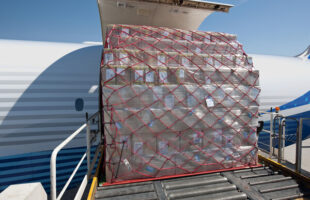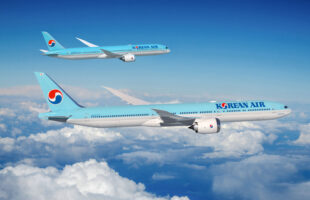Chicago-based Boeing has announced that it will eliminate 4,500 jobs from its commercial work force in 2009, with 60-day layoff notices going out next month. Most of the jobs will be cut from its Seattle-based commercial airplane division. The job cuts will not be unionized machinists – which paralysed the company with a strike late last year – but rather administrative positions and what the company described as employees in “overhead functions.” “This is a difficult and painful decision,” Scott Carson, president and chief executive of Boeing Commercial Airplanes, said in an e-mail to all commercial employees. “As we look forward to 2009 and see daily headlines of how a growing global recession is impacting economies, it is clear that industries and individuals must prepare for a year of tough challenges,” Carson said. “Airlines are seeing passenger and freight traffic decline. Our customers are cutting back on capacity by parking older airplanes, reducing orders for spares and taking other steps to deal with the current business environment.” The 4,500 jobs represent about 6.6 per cent of Boeing’s total commercial work force of 67,659 as at the end of December. Boeing, in a news release, said it wants to reduce its commercial employment to where it was at the start of 2008, or around 63,500. By cutting mostly jobs not directly associated with airplane production, Carson said in his e-mail, Boeing will be able to “to continue our high production rates and successfully execute our key development programs.” Carson also sounded a gloomy note on the outlook for the coming year. “Our customers are cutting back on capacity by parking older airplanes, reducing orders for spares and taking other steps to deal with the current business environment,” he wrote. “In addition, Commercial Airplanes delivered fewer airplanes than projected and rescheduled the 787 Dreamliner and the 747-8 development programs. To stay ahead of these challenges, we are taking prudent actions to make sure Commercial Airplanes remains well positioned in today’s difficult economic environment.” 2008 was a tough year for Boeing with soaring fuel prices, a slumping global economy and a 58-day machinist strike which ended with 662 net commercial aircraft orders for Boeing, a steep drop from the record 1,413 garnered in 2007. The 662 orders is the eighth-highest annual total on record for Boeing. The B737NG again was the manufacturer’s most popular model with 484 net orders. It sold 93 B787s, largely to customers in the Middle East, as well as 54 777s, 28 767-300ERs and three B747-8Is. “While we clearly faced obstacles, 2008 also was a time of accomplishment at Commercial Airplanes,” Carson said. “With a balanced base of customers from all regions of the world, from airlines with varied business models, and with strong orders across our product line, we are now focused on executing this strong backlog position,” he added. The backlog now exceeds 3,700 aircraft. The company also completed 26 freighter conversions during 2008, including the first 767BCF. Deliveries, hampered by the strike, fell to 375 for the year from 441 in 2007. In 2008 Boeing delivered 290 737NGs, 14 747s, 10 767s and 61 777s. Fourth-quarter deliveries plummeted to 50 from 112 in the year-ago quarter.
Related Articles
 Boeing: Air cargo traffic to double by 2043 as emerging markets drive growth
Boeing: Air cargo traffic to double by 2043 as emerging markets drive growth Emirates SkyCargo to expand fleet, capacity with five more Boeing 777 freighters
Emirates SkyCargo to expand fleet, capacity with five more Boeing 777 freighters Boeing: China commercial fleet to more than double by 2043 for growth and modernisation
Boeing: China commercial fleet to more than double by 2043 for growth and modernisation Xeneta reports resilient air cargo market despite July IT outage
Xeneta reports resilient air cargo market despite July IT outage Boeing board names Kelly Ortberg President and CEO
Boeing board names Kelly Ortberg President and CEO Korean Air to order up to 50 widebody Boeing aircraft
Korean Air to order up to 50 widebody Boeing aircraft




